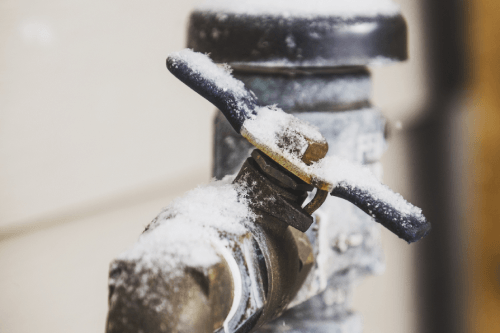This great article below pertaining to Winter Plumbing Precautions: Preventing Frozen Pipes is relatively intriguing. Don't skip it.

Cold weather can wreak havoc on your pipes, especially by freezing pipes. Below's how to stop it from occurring and what to do if it does.
Introduction
As temperature levels decrease, the risk of icy pipes increases, potentially leading to costly repair services and water damage. Recognizing how to avoid icy pipelines is important for home owners in chilly environments.
Prevention Tips
Protecting prone pipes
Wrap pipelines in insulation sleeves or make use of warmth tape to protect them from freezing temperatures. Concentrate on pipes in unheated or outside areas of the home.
Heating techniques
Keep indoor areas properly heated up, particularly locations with plumbing. Open up cabinet doors to permit warm air to flow around pipelines under sinks.
How to determine icy pipelines
Look for lowered water flow from taps, unusual smells or sounds from pipelines, and noticeable frost on exposed pipes.
Long-Term Solutions
Architectural adjustments
Take into consideration rerouting pipelines away from exterior walls or unheated locations. Include extra insulation to attics, basements, and crawl spaces.
Updating insulation
Buy high-grade insulation for pipelines, attics, and wall surfaces. Proper insulation assists keep consistent temperature levels and reduces the risk of icy pipes.
Shielding Exterior Plumbing
Yard tubes and outdoor faucets
Detach and drain pipes yard hose pipes before winter months. Install frost-proof faucets or cover outside faucets with insulated caps.
Comprehending Frozen Pipelines
What creates pipes to ice up?
Pipelines freeze when revealed to temperatures listed below 32 ° F (0 ° C) for prolonged periods. As water inside the pipelines freezes, it broadens, putting pressure on the pipeline walls and possibly triggering them to rupture.
Threats and problems
Icy pipes can cause water supply disruptions, residential property damage, and costly repair work. Ruptured pipes can flooding homes and create comprehensive architectural damages.
Indicators of Frozen Piping
Recognizing icy pipes early can stop them from rupturing.
What to Do If Your Pipelines Freeze
Immediate activities to take
If you believe frozen pipes, keep faucets available to relieve pressure as the ice melts. Use a hairdryer or towels taken in hot water to thaw pipes gradually.
Verdict
Preventing frozen pipelines needs positive steps and fast feedbacks. By understanding the reasons, indications, and safety nets, property owners can shield their plumbing during winter.
5 Ways to Prevent Frozen Pipes
Drain Outdoor Faucets and Disconnect Hoses
First, close the shut-off valve that controls the flow of water in the pipe to your outdoor faucet. Then, head outside to disconnect and drain your hose and open the outdoor faucet to allow the water to completely drain out of the line. Turn off the faucet when done. Finally, head back to the shut-off valve and drain the remaining water inside the pipe into a bucket or container. Additionally, if you have a home irrigation system, you should consider hiring an expert to clear the system of water each year.
Insulate Pipes
One of the best and most cost-effective methods for preventing frozen water pipes is to wrap your pipes with insulation. This is especially important for areas in your home that aren’t exposed to heat, such as an attic. We suggest using foam sleeves, which can typically be found at your local hardware store.
Keep Heat Running at 65
Your pipes are located inside your walls, and the temperature there is much colder than the rest of the house. To prevent your pipes from freezing, The Insurance Information Institute suggests that you keep your home heated to at least 65 degrees, even when traveling. You may want to invest in smart devices that can keep an eye on the temperature in your home while you’re away.
Leave Water Dripping
Moving water — even a small trickle — can prevent ice from forming inside your pipes. When freezing temps are imminent, start a drip of water from all faucets that serve exposed pipes. Leaving a few faucets running will also help relieve pressure inside the pipes and help prevent a rupture if the water inside freezes.
Open Cupboard Doors
Warm your kitchen and bathroom pipes by opening cupboards and vanities. You should also leave your interior doors ajar to help warm air circulate evenly throughout your home.

As an avid person who reads on How to Prevent Your Pipes From Freezing, I was thinking sharing that excerpt was essential. Do you know anybody else who is fascinated about Prevent Frozen Pipes ? Take a moment to share it. I appreciate reading our article about How To Avoid Freezing Pipes.
Click
Comments on “Important Advice to Avoid Frozen Pipes in Winter: Specialist Insights”